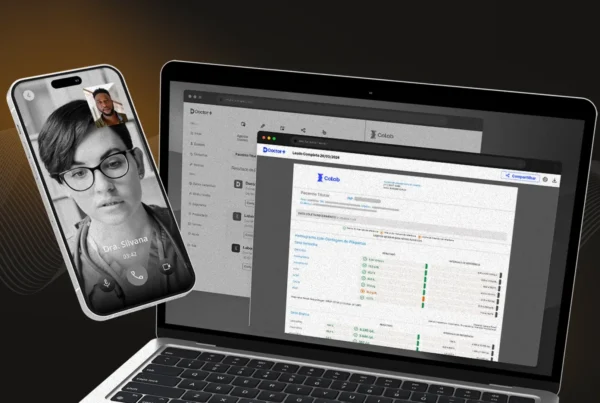Investing in Software Engineering is one of the main paths used today by C-level professionals to introduce innovation, productive dynamism and customer focus to their companies.
By developing their own solutions, these businesses are reaching high levels of experience customization and operational efficiency. Therefore, they bring Digital Transformation to the office in a more personalized way.
If you are looking for this type of support for your new strategies in competitive markets, this guide is the perfect place to begin.
Here, we will cover all topics that need to be well defined to implement your own in-company development routine: the basic principles, its challenges, and practices and tools. Enjoy reading!
Basic principles of software engineering
Before talking about practicality, it is necessary to objectively define what Software Engineering is, so you can understand how its implementation brings a new innovative and productive dimension to the company.
The general context of this activity is simple to understand, since engineering itself is a process of planning and building structures as old as humanity itself.
However, when we take the engineering concept to the creation of software, we bring some technological particularities, mainly because its logical structure is constantly changing.
Software engineering is an activity that develops – from programming language, planning and digital resources such as database – applications capable of performing specific functions or offering internal and external interaction tools to a business.
The product of this work can be an information system, productivity platform, tool for specific tasks, communication systems or even digital experiences for customers. Software Engineering within the business allows you to create an environment of innovation and customization, capable of finding its own solutions to specific problems and/or objectives.
Software Engineering needs methodology for its implementation to be successful. There are some basic principles to be adopted by the development team:
- formality of processes, rationalizing steps and responsibilities of the team during the development of digital solutions;
- abstraction of objectives, allowing the developer to identify problems and goals to be solved without noise;
- listing of objectives, in which this view of problems and objectives is broken into rational steps of planning and production;
- generalization of the plan so that specific hypotheses are applicable in a generalist solution that achieves all objectives;
- result quantification, making the piece of software analyzable from a more direct point of view that points to the success and failure of new hypotheses;
- constant interaction, providing the continuous development of improvements according to the analysis of results and new demands of the market.
Taking all these points into consideration, we can conclude that Software Engineering is a process to build solutions from the pains of the company, the public and the market.
For it to be reliable, it must be organized, systematic, methodical and quantifiable. If successful within these parameters, Software Engineering can be the competitive factor that a company seeks to increase productive efficiency, delight customers and consolidate in the market.
The biggest challenges of software engineering
While Software Engineering brings many benefits to dynamic businesses, it is still common to see C-level professionals struggling to implement it within the business —whether to develop internal solutions or to meet customer demands, especially B2B.
This difficulty has a lot to do with the challenges related to this routine. Knowing the points of attention throughout this journey makes it easy to prepare an organized and efficient development environment, focusing on transformation goals. See the main challenges of the practice.
Project scope definition
As we stated above, Software Engineering is very dependent on systematic methods and processes so that the result reflects the initial planning. The lack of scope in a development project is one of the problems that most affects the success of the companies.
When you decide to create a digital solution, you need to have clearly in mind what it is going to solve. This is how you understand the path of development, the complexity and the types of resources that will be needed over a given time. This objective vision is fundamental for your success.
Consolidation of software engineering principles
One point that hinders less organized companies is the abandonment of the principles we mentioned during the software construction process.
Often, problems with deadlines, functionalities and demands become a temptation for the responsible team in charge to accelerate phases, cut ideas and try to deliver the solution in any way.
It is always good to remember that a software that does not meet your goals can be frustrating and detrimental to your business routine. If you keep your team focused on results, you can bypass obstacles and deliver a product that truly meets your needs.
Connection between solution and demand
This point seems to be obvious, but a significant amount of software has its potential wasted inside companies, when the project and its team lose connection with the objectives established during its conception.
Lack of objectivity can majorly hinder success in Software Engineering. That is why Project Managers are people with systematic and aggregator profiles, who can keep track of development and focus the team on what really matters.
Usability and experience
There is no point for a digital solution to achieve a logical goal for which it was created if it does not work in practice. More than features and tools, a software needs usability to connect its functionality to the results in the real world.
UX, or user experience, is currently one of the most discussed points in Software Engineering. It is the ability of the solution to deliver an interactivity that not only becomes practical and intuitive, but also creates a habit of use that facilitates its adoption.
It is an issue primarily focused on software development for the final audience, but it also makes a big difference in productive efficiency in internal solutions.
Continuity
One of the major challenges of Software Engineering is that this process does not end when the first goal is achieved—and it can never be seen that way.
When a company commits to the development of a digital solution, it needs to analyze the evolution of this product in the medium and long term, with evolution roadmaps and improvement of its practical characteristics.
It’s another point where investing in Software Engineering becomes an investment in innovation and efficiency. And it requires planning, focus on goals and a good operational structure of the team.
Software engineering best practices
To enjoy the benefits of customized software solutions without getting lost in the challenges that this type of project presents, the company needs to make sure that it builds and applies development practices in the right way.
This is a search to rationalize processes, ensure results and prioritize the quality of the solution in relation to its objectives. See the most important practices to seize the potential of Software Engineering.
Create a multidisciplinary team
Although the software engineer is responsible for the project, this does not mean that his team should be restricted only to developers and technology professionals.
After all, his goal is probably to create productive solutions for the company or new digital experiences for customers. In this sense, development should be aligned with practical business results. The participation of users, vendors, directors and other types of employees can help to find more pertinent insights within the possibilities of the software.
Implement a methodology
Agile methodologies, for example, are very efficient to create a consolidated Software Engineering environment within the company. There are several examples such as Kanban, Scrum etc.
Regardless of which one is chosen, all of them have specificities, both of production approach and alignment with professional profiles. Therefore, it is your function to search and choose the one that best fits your team and your product.
Collect the necessary requirements and resources
When planning new software, the company needs to know exactly how many people, resources, and time will be needed for development. A survey is done with all related parties and will guide productive decisions throughout the life of the solution.
Invest in communication
Today communication is fundamental for the efficiency of Software Engineering. That includes the alignment of objectives, immediate exchange of information about the product, history of changes, meetings and even the code versioning so that all the parts can work in tune.
Use prototyping
The creation of prototypes is fundamental both in the validation of new tools and in the study of the usability and experience of a new software in its practical use.
Ideally the solution should be tested as soon as it reaches a minimum viable product, MVP. From this initial main body, developers will study and make improvements for a more efficient and practical software.
Create a cycle of improvemet
As we have already mentioned, development is a process that never stops iterating with the software while it is useful to the company. This cycle should be well defined within the team and the methodology used.
The idea is that evolution never stops. When completing a new engineering stage, functionality is put to the test and measured; and the results are used for the next step.
Measure the results
Speaking of measuring, the ability of C-level professionals to collect and analyze data is increasingly important in the market. This also applies to Software Engineering.
The monitoring of performance indicators of the solution indicates opportunities for improvement and challenges that can still be overcome.
Tools that can contribute to software engineering
In a project that involves collaboration, efficient steps and intelligent process vision, Software Engineering becomes more optimized when tools support the team’s productivity.
There are no universal solutions for this. Each company should adapt its development routine to its objectives and to the particularities of the desired solution. But we can suggest some types of tools in relevant areas to cover the needs of these processes. Here are some examples:
- Communication and team management tools, such as Slack and Trello, facilitate the alignment of productive steps and the communication of the team in real time;
- Organization and versioning tools, such as Git, assist in the rationalization of changes and branch-based development, for greater control over changes being put into practice and troubleshooting;
- Development tools, such as Eclipse IDE, Matlab and others, that serve to specific development purposes and streamline the work of engineers;
- General management platforms, such as ERPs and SAPs, that give C-levels not only the visibility of the development process, but also the ability to measure its impact on the business practice;
There are diverse options in the market, from more general proposals to very specific tools. During the planning of the project, bringing the whole team together, the needs about the right solution to invest in will be clear.
Software engineering and brq
Transforming businesses with technology, assisting companies in their Digital Transformation journeys is BRQ’s goal. And one of the ways we do that is through our teams specialized in technology, the Managed Squads.
They are teams comprised of highly trained professionals in the development and implementation of strategies and tools that transform digital solutions in practical results for the company – more efficiency, cost reduction, data intelligence, productive dynamism, among others Working with their own frameworks based on Lean Management, Agility and Software Engineering, Squads offer as much knowledge and technologicalexpertise as possible for your business. Do you want to know more about our specialized team? Contact us to find out more!





